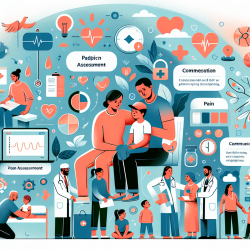Introduction
The COVID-19 pandemic has brought unprecedented challenges, particularly impacting the mental well-being (MWB) of children. Recent research, such as the study titled "Associations of physical activity and sedentary behaviors with child mental well-being during the COVID-19 pandemic," highlights the critical role of physical activity (PA) in maintaining and improving child MWB. As practitioners, understanding these associations can empower us to better support children during these challenging times.
Understanding the Research
The study utilized a mixed-methods approach, combining quantitative surveys and qualitative interviews with parents of children in kindergarten through 5th grade. The findings revealed a significant decrease in child MWB during the pandemic, with 74% of parents reporting worse MWB. A notable 61% reported decreased PA, while 91% noted increased sedentary behavior (SB).
Key insights from the research include:
- Decreased PA is linked to a 53% lower likelihood of maintaining or improving MWB.
- Outdoor play and organized sports significantly influence child MWB positively.
- Increased SB, particularly time spent sitting, correlates with decreased MWB.
Implementing Research Outcomes
As practitioners, we can leverage these insights to enhance our strategies for supporting child MWB. Here are actionable steps to consider:
- Encourage Outdoor Activities: Facilitate outdoor play and sports, which are shown to improve MWB. This can include organizing safe, socially-distanced activities or encouraging families to engage in outdoor play.
- Incorporate Physical Activity in Daily Routines: Suggest integrating short PA breaks during online classes or therapy sessions. Activities like stretching or quick exercises can help reduce SB.
- Promote Active Socializing: Encourage the use of technology for active socializing, such as virtual dance classes or group exercise sessions, to combine social interaction with PA.
Encouraging Further Research
While this study provides valuable insights, it also highlights the need for further research. Practitioners are encouraged to explore additional studies on the impact of PA on child MWB, considering variables such as age, socioeconomic status, and urbanicity. Understanding these factors can help tailor interventions to meet diverse needs.
Conclusion
The pandemic's impact on child MWB underscores the importance of maintaining PA levels and reducing SB. By implementing research-based strategies, practitioners can play a pivotal role in supporting children's mental health. Continuous learning and adaptation will ensure we provide the best care during these challenging times.
To read the original research paper, please follow this link: Associations of physical activity and sedentary behaviors with child mental well-being during the COVID-19 pandemic.










